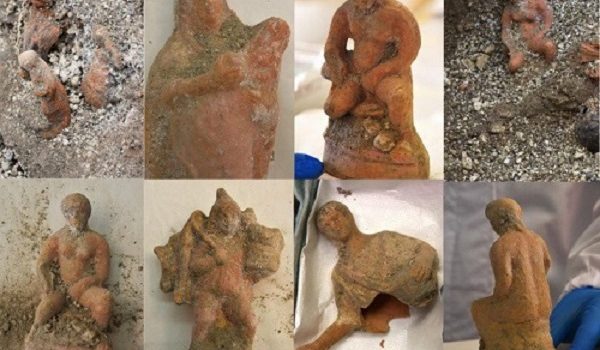From initial studies, some of the figurines seem to refer to the myth of Cybele and Attis, connected to the life cycle of the seasons and the fertility of the earth, and thus to the spring equinox.
The work in progress focuses on the rooms already uncovered in the House of Leda (discovered between 2018 and 2019 as part of the works envisaged by the Great Pompeii Project) and those of two houses, not yet fully defined, to the north and south of the House of Leda.
During the removal of the material still present in some of the rooms of the House of Leda, in order to reach the level of the floor, a finely frescoed room also emerged in which four roundels with female faces of refined elegance stand out.
The purpose of the excavation is to consolidate and stabilise the edge of the site (the boundary between structures already exposed and the unexcavated areas) and to safeguard and conserve the buildings and decorative schemes, in preparation for access to the complex by the general public in the future.


